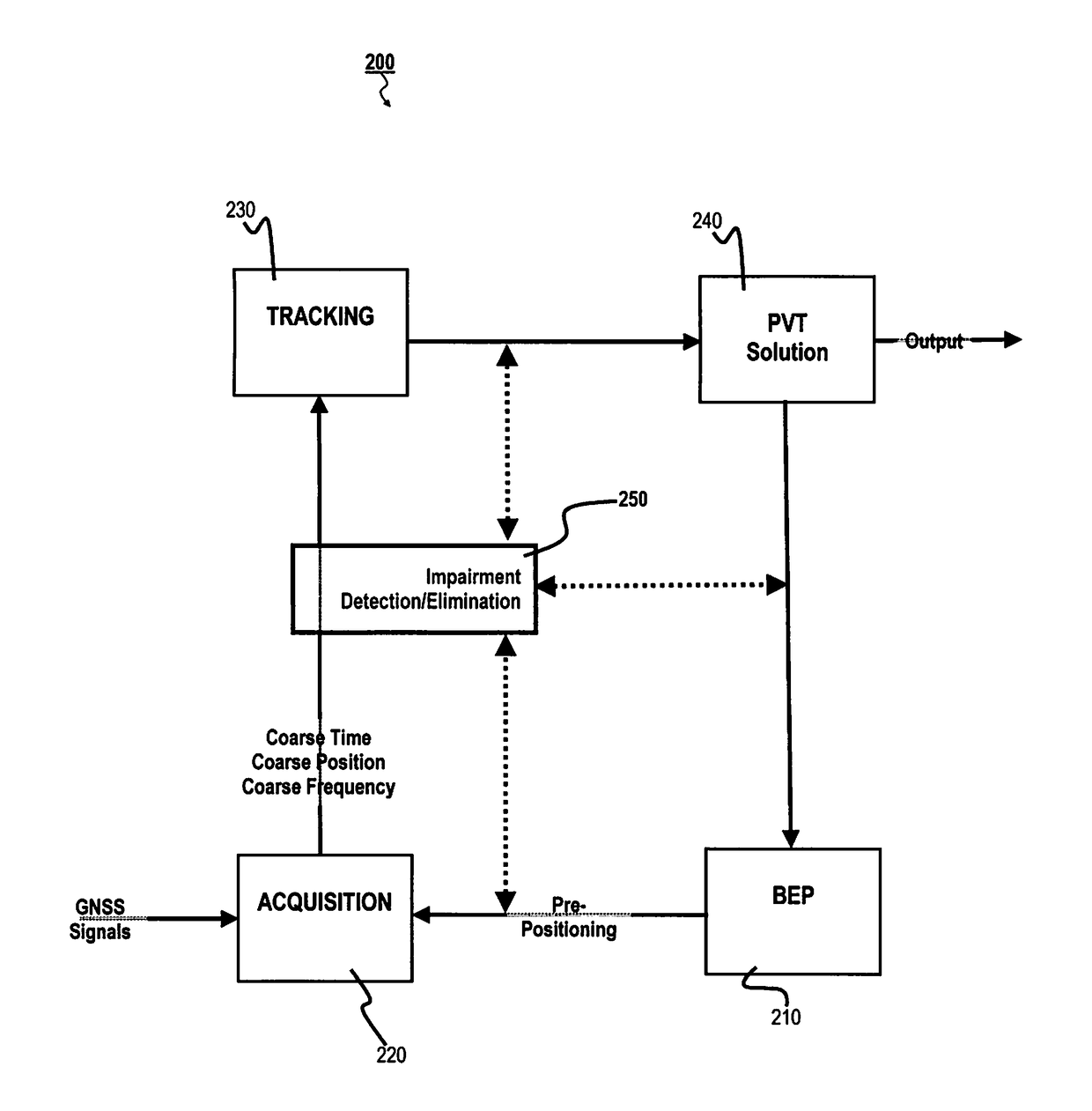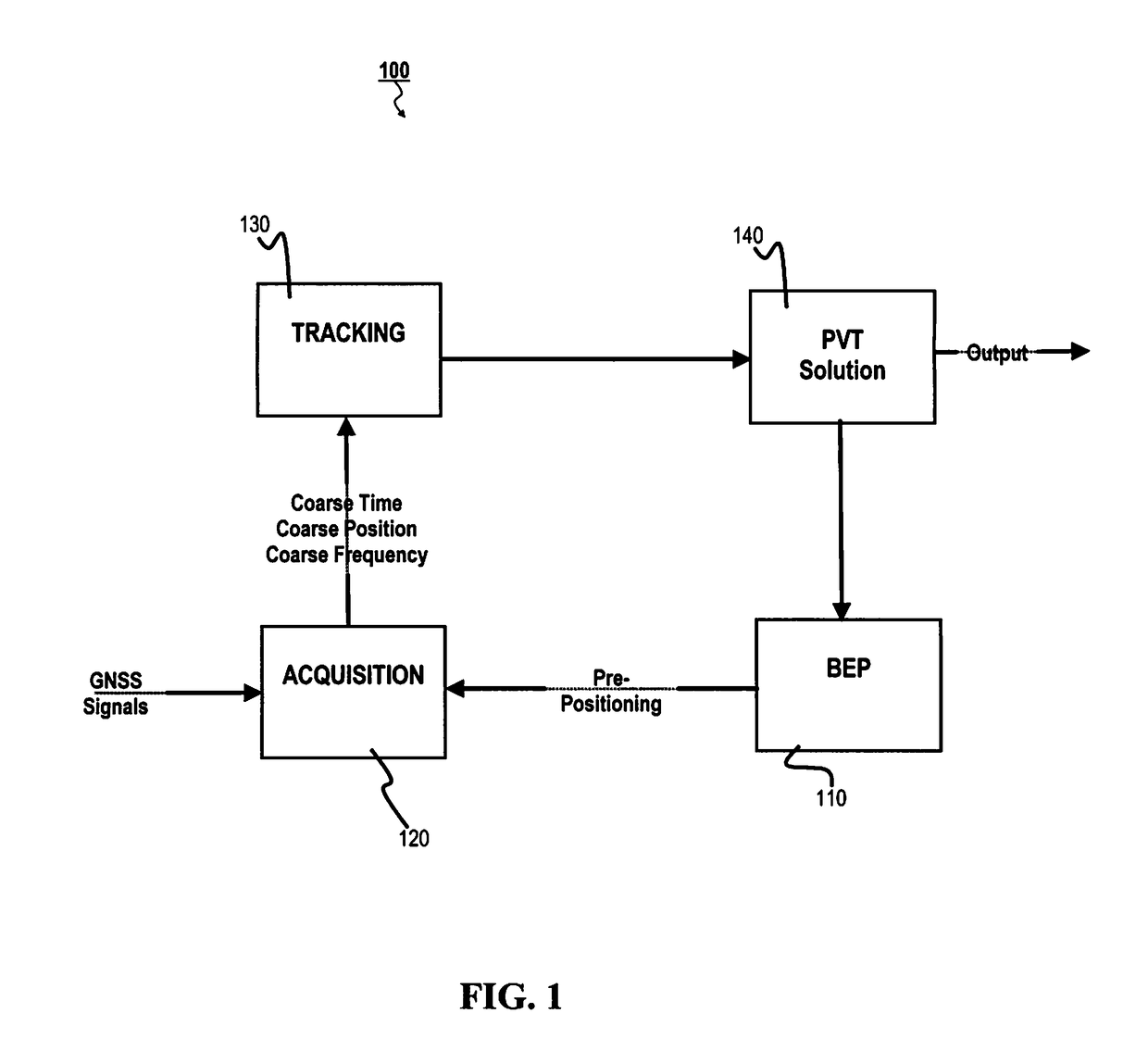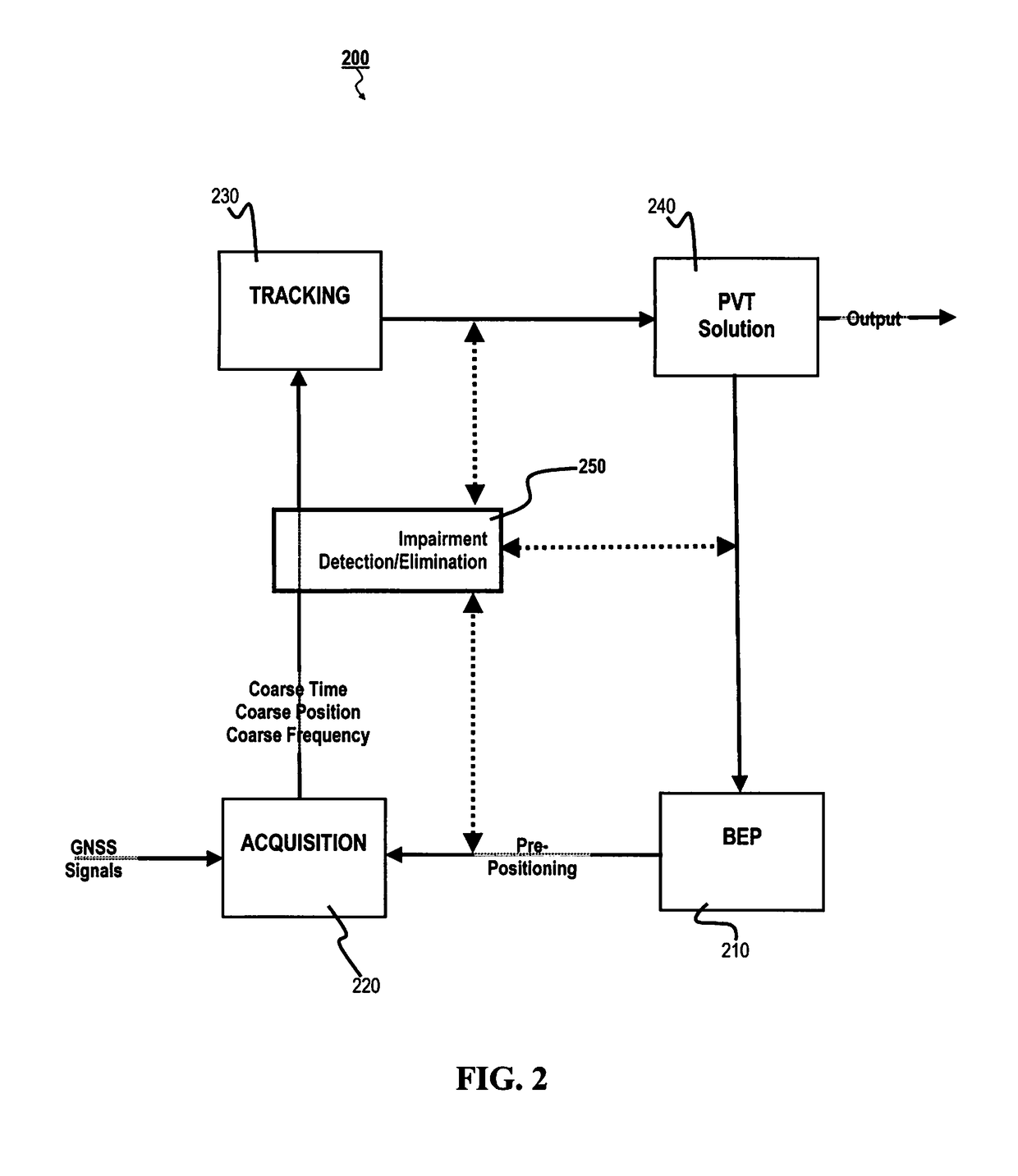Method for efficiently detecting impairments in a multi-constellation gnss receiver
a multi-constellation, receiver technology, applied in satellite radio beaconing, measurement devices, instruments, etc., can solve the problems of increasing the complexity of the actual reception and processing of gnss signals, increasing the difficulty of detecting impairments, and requiring much more computing resources than tracking for acquisition, so as to achieve quick and efficient
- Summary
- Abstract
- Description
- Claims
- Application Information
AI Technical Summary
Benefits of technology
Problems solved by technology
Method used
Image
Examples
Embodiment Construction
[0027]Various embodiments of the present invention will now be described in detail with reference to the accompanying drawings. In the following description, specific details such as detailed configuration and components are merely provided to assist the overall understanding of these embodiments of the present invention. Therefore, it should be apparent to those skilled in the art that various changes and modifications of the embodiments described herein can be made without departing from the scope and spirit of the present invention. In addition, descriptions of well-known functions and constructions are omitted for clarity and conciseness.
[0028]In general, the present application relates to quickly and efficiently detecting impairments in a GNSS receiver. More specifically, signals likely being “false positives” are identified and eliminated from the on-going tracking-acquisition-calculating loop, thereby eliminating a wasted use of computing resources as well as reducing inaccur...
PUM
 Login to view more
Login to view more Abstract
Description
Claims
Application Information
 Login to view more
Login to view more - R&D Engineer
- R&D Manager
- IP Professional
- Industry Leading Data Capabilities
- Powerful AI technology
- Patent DNA Extraction
Browse by: Latest US Patents, China's latest patents, Technical Efficacy Thesaurus, Application Domain, Technology Topic.
© 2024 PatSnap. All rights reserved.Legal|Privacy policy|Modern Slavery Act Transparency Statement|Sitemap



